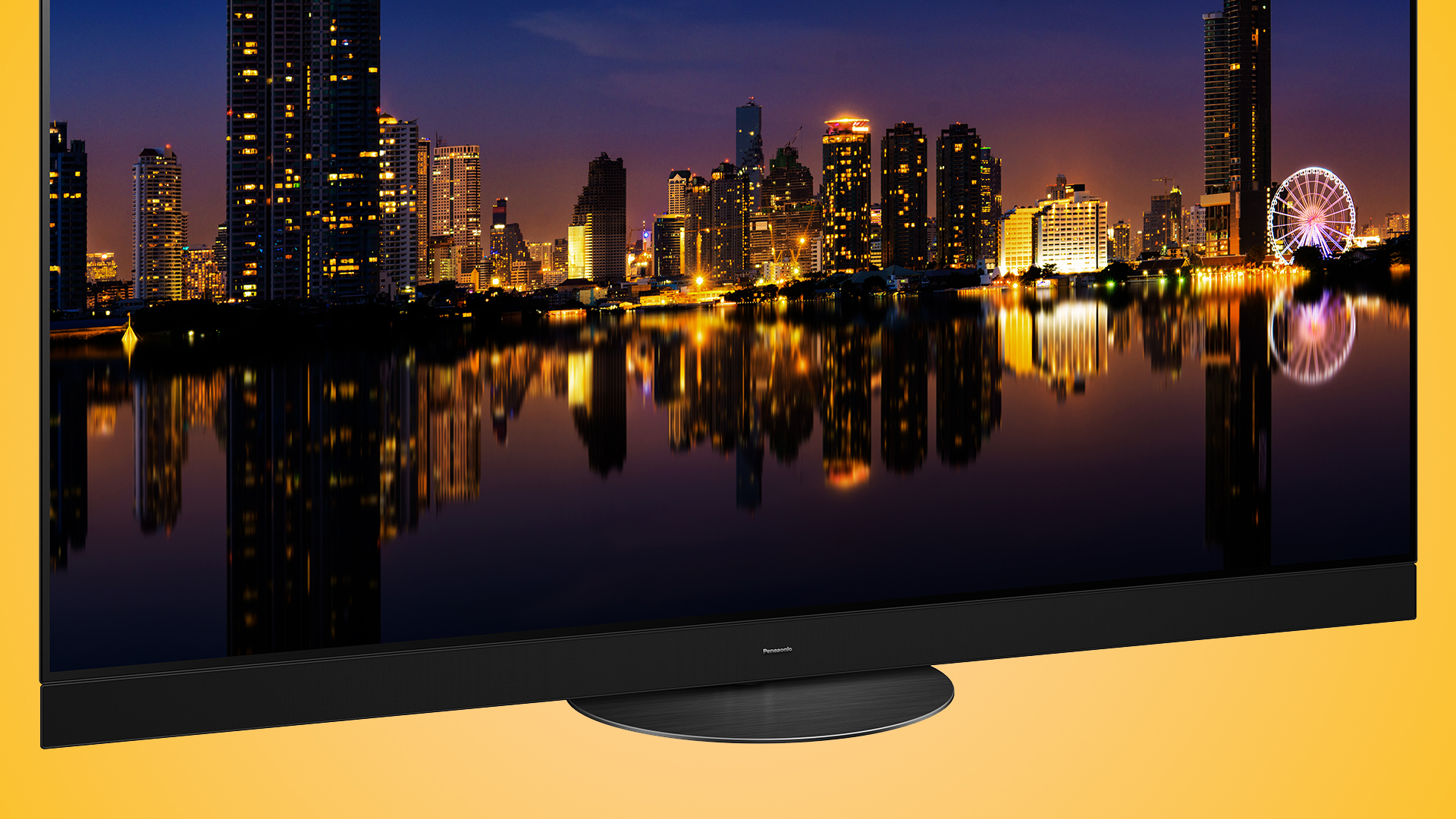I saw Panasonic’s MZ1500 OLED TV, and it beats the LG C3 in two big ways
But not everyone will be able to get it

Panasonic has announced its full range of OLED TVs for 2023, and it includes a model – the Panasonic MZ1500 – that stands out because it fills a real gap in the world of OLED TVs. At least, in the world of OLED TVs where it's available – like all Panasonic OLEDs, it won't be sold in the US, but you'll be able to buy it in the UK and Europe.
I had the chance to see the MZ1500 in action, while at a launch event in Berlin, and it solves the two biggest potential frustrations of the generally excellent LG C3 OLED TV. It also doesn't cost as much as the higher-end LG G3 OLED or Panasonic's own flagship MZ2000 TV, making it a very tempting prospect.
The two advantages the MZ1500 has over LG C3 are its higher brightness levels, and its forward-facing 2.1-channel speaker system. The brightness is the biggest draw, probably, and although I didn't get to see the MZ1500 in direct comparison to an LG C3, I got to compare it to the Panasonic MZ980 OLED TV, which is extremely close to the C3 in terms of panel tech.
Everything pops more on the MZ1500's screen compared to a more mid-range OLED. The colors look richer, white tones leap out thanks to extra brightness and an extra-clean look, and OLED's famously great black tones feel even deeper because of the better contrast range overall compared to the brightest areas.

I saw the TV in Dynamic mode, which will have maximized the contrast for my demo, but it's not just the case that the boost in brightness is only visible in small bright highlights – the whole screen is a level up in realism and clarity compared to cheaper OLED TVs (it's almost like a dirty window that's been cleaned at last).
The MZ1500 uses Panasonic's Master OLED Pro screen, which means that it's tuned for color accuracy out of the box, but most importantly that also means it includes heat management tech that's custom to Panasonic. A heatsink behind the panel allows the brightness to be pushed harder without shortening the life of the OLED screen, or risking the dreaded burn-in, where 'ghost' images stay on the screen.
The screen is essentially the same as last year's Panasonic LZ1500 TV, which reached peak brightness of around 1,000 nits in real-world testing. In our LG C3 review, we measured its real peak brightness at around 800 nits, so assuming MZ1500 can hit the same highs (and there's no reason it won't), you're getting a 20% boost in brightness compared to the C3 – and as I mentioned above, you can really see that difference in practise. And, unlike any LG or Samsung TV, the Panasonic has support for both Dolby Vision and HDR10+, so it can make the most of its contrast whatever service you watch on.
The LG G3 (or the Samsung S95C) are both much brighter again, reaching around 1,400 nits – but you have to spend a load more again to get there. The MZ1500 looks like a nice balance.
Sound's good

As mentioned, the built-in speakers in the MZ1500 are the other advantage that it has over the LG C3. And although the C3's sound isn't bad at all for a thin TV with a hidden speaker system, there's nothing quite like having stereo channels pointing straight at you with a dedicated subwoofer to add bass.
The speakers create a big soundstage that feels deep, based on my experience with it – and doing both of these is hard for most TVs. The LG C3 can create a wide and tall soundstage with some positional effects when you engage its AI sound mode, but the audio is thin – it's never going to really satisfy in action scenes or elevate a score to its full potential. The MZ1500 felt dynamic, crisp and able to deliver a wider range – and with plenty of detail, which also tends to be lost with small speakers.
Let's be clear, it's still somewhat basic compared to what one of the best soundbars gives you. And it's not going to give you a convincing Dolby Atmos effect (though it does support some psychoacoustic trickery to expand the sound), but if you just want a TV with sound that feels solid and don't want to add any other tech to your setup, it's a major step up, and will probably be one of the best TVs for sound.
Those are the main two things that stood out to me when seeing (and hearing) the MZ1500 in person. A lot of its other features are things you'd expect, including comprehensive gaming support (it has two HDMI 2.1 ports with VRR and 4K 120fps), Panasonic's highest-end image processing (which includes improved reduction of color banding that makes a great difference in practice), and a comprehensive smart TV platform. The latter of those is Panasonic's own My Home Screen system, which has some nice touches, but isn't generally considered to be at the top of the pack, and is an area where LG's OLEDs may be preferable.
Priced at around £2,199 (approx. $2,700 / AU$4,080) for the 55-inch version and £2,899 (approx. $3,680 / AU$5,390) for the 65-inch, the MZ1500 is more expensive than the C3, which can currently be found for £1,899 ($1,799 / AU$2,795) at 55-inches and £2,699 ($2,499 / AU$3,695) at 65-inches.
But the MZ1500 is cheaper than the LG G3's prices of £2,399 ($2,499 / AU$4,195) at 55-inches and £3,299 ($3,299 / AU$5,295) at 65-inches (at the time of writing). You can split the difference on price and picture quality.
I think the MZ1500 will provide a nice option for people who want a better home theater experience than a mid-tier OLED can provide, and are willing to pay a bit more… but not as much as the high-end stuff. It could be one of the best OLED TVs of the year.
Get daily insight, inspiration and deals in your inbox
Sign up for breaking news, reviews, opinion, top tech deals, and more.

Matt is TechRadar's Managing Editor for Entertainment, meaning he's in charge of persuading our team of writers and reviewers to watch the latest TV shows and movies on gorgeous TVs and listen to fantastic speakers and headphones. It's a tough task, as you can imagine. Matt has over a decade of experience in tech publishing, and previously ran the TV & audio coverage for our colleagues at T3.com, and before that he edited T3 magazine. During his career, he's also contributed to places as varied as Creative Bloq, PC Gamer, PetsRadar, MacLife, and Edge. TV and movie nerdism is his speciality, and he goes to the cinema three times a week. He's always happy to explain the virtues of Dolby Vision over a drink, but he might need to use props, like he's explaining the offside rule.